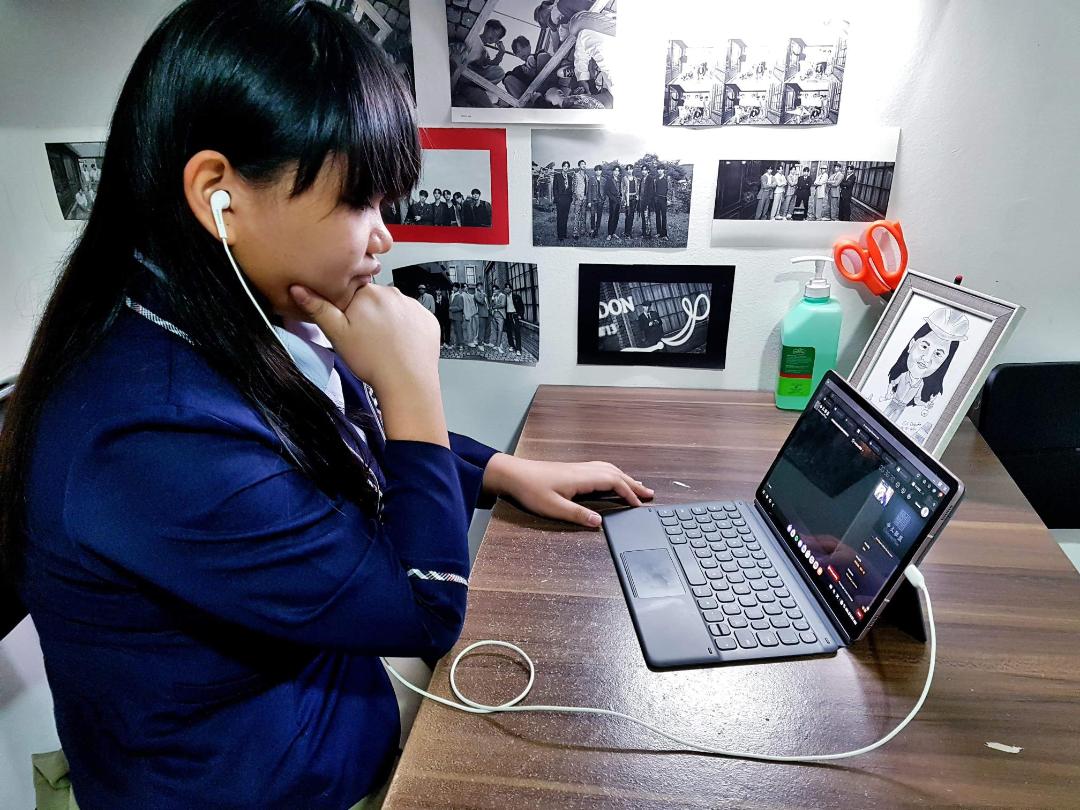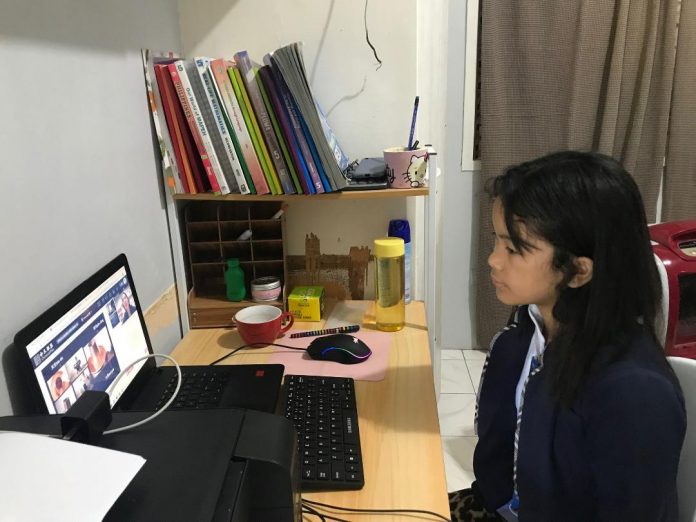Bringing classes to the comfort of one’s home and protecting students and teachers from the Covid-19 virus were, and maybe, among the conveniences of a redesigned academic operation during the pandemic.
A year hence, the comforts would also bring challenges to all sectors in the academic community as they navigate themselves through the new setup and new teaching and learning requirements.
“Ever since the Covid-19 pandemic started back in March last year, all schools were required to immediately stop all campus activities and canceling final examinations, graduation, and closing ceremonies,” said Jimmie-Loe Dela Vega, executive director of the Davao Association of Catholic Schools (DACS).
He said the students’ final grades were computed based on accumulated periodic assessments and performance tasks. “There was a lot of effort put into adjusting summer class schedules and to setting up online systems and materials for a distance or blended form of instruction in the coming school year.”
“However, only a few schools were able to conduct a purely online approach while the rest adopted a modular approach which consequently entailed high cost in the production of modules,” he added.
Mary Fritz Ongcoy, a senior high school teacher from the University of the Immaculate Concepcion here, found it challenging and exciting in her first year experiencing teaching online class.
“Venturing into online classes took a lot of adjustment having to work in a fast-paced environment that is way different than in a real classroom setting,” she said.
While it thrilled some sectors over the new set-up, citing savings on fare and “baon” and away from the hustle and bustle of not getting late to class, others have to innovate, re-engineer and cope with rushed up modules and curricula, as well as the regular failure of technology.
Struggling
With the current situation, Oncoy said the “new normal,” brought flexibility and a more comfortable learning environment. Although her students were also struggling, they wanted to perform their tasks well and expound their interest in the subjects.
A teacher from the Ateneo de Davao University, who requested anonymity, said some plus points of online class include saving money because she did not need to go out and ride on public transport and bring food for lunch.
If classes were called off and she needed rest, she could easily go to bed and sleep or spend more time with her family.
But as to handling and dealing with students online, Ongcoy had to extend a lot of patience and considerations for online submission. Many students have been complaining about technical difficulties and glitzes. At times, she had difficulty connecting with her students because of the lack of access to technology.
“Not every home will always have a reliable internet connection or a readily available device for students to use. That’s why most of the students opted to enroll in modular classes,” she said.
And when schools decided to conduct online and modular classes, Ongcoy and her co-workers had to be trained and prepared for the online platforms for the school year since this teaching mode is different from the standard face-to-face classes.
Due to the limitations and making sure that the students wouldn’t risk going out, she had to find alternative solutions to achieve performance task objectives. Giving seminars, symposiums, and interviews over the phone or email helped her learners.
Parents’ support and involvement were also immense and meaningful, she said, as online and modular learning was student-centered.
 Paradigm shift
Paradigm shift
Schools, too, had to contend with staffing and employment concerns “given the sudden loss of income due to uncollected fees,” according to DACS’ Dela Vega. “While schools tried to keep teachers, staff, and other employees for a couple of months, the non-essential jobs eventually had to be vacated. Many had to shift to a flexible work arrangement and send many employees on a floating status or offer early retirement.”
He confirmed the difficulties that schools and students encountered upon shifting to a new mode of teaching and learning. “The use of email, social media, and group chats have played an important role in proper communication between DACS and the Catholic schools in the city.” DACS also launched its official website as a venue for information and collaboration.
However, poor Internet signals and the lack of functional devices for students were the main problems. Dela Vega said schools had to upgrade their internet bandwidth and provide communication or load allowances for teachers.
Due to limitations, including preparation, quality assurance may have suffered lapses in instruction materials without actual interaction for workshops or performance tasks.
“Modules for the students were hurriedly prepared by teachers with no experience in online delivery or modular method,” he added.
As online platforms were adapted to handle distance or online teaching and learning, teachers had to be provided with training that focused on retooling or reskilling to adjust to the new mode of delivery of instruction. Schools also had to consult with content providers and curriculum experts to support the efforts of their teachers.
Surviving
A UIC student said she had to do several things to grasp the change in the mode of teaching. She bought a new keyboard, a mouse, and headphones. She also requested her parents to install Internet Wi-Fi in their house because she has siblings that also needed it.
Though unprepared, she appreciated the importance of protecting everyone from infection. She also liked that she could sleep all day without worrying about being late but hated the most for not seeing her friends personally.
Janine Dichoso, a college student from Ateneo de Davao University, wasn’t prepared as well. Since this was her first time to experience class online, she had to ensure that she had all the necessary gadgets for her to participate in video calls and activities.
As her last face-to-face school day ended around the same time the stay-at-home order was issued in March, she only had less than a month to prepare for her summer classes online.
The covid-19 virus was still new to everyone, and people struggled to adapt to the sudden changes and government guidelines. Janine said that although summer classes online were a first for her, she didn’t know what to expect.
She admitted that online class seemed like a dream come true to people like her who get lazy from time to time, not having to wake up early, no more commuting, staying at home in bed all day, and being flexible with time to do things.
However, having classes from home wasn’t as glamorous as she thought.
The whole summer class made her feel overwhelmed, pressured and distracted. The environment at home made it difficult for her to focus since the household members were all doing their own thing. With everyone at home and an unreliable internet connection, there were many times when she would have synchronous classes and suddenly get cut off.
At the time, she always had a new task to accomplish every day, and it was exhausting. She would wake up early so that she had more time throughout the day to finish her work yet end up staying up late at night to start on the next day’s assignment.
When summer class ended, she felt relieved to have survived. The three classes that she took every day in the summer took a toll on her, and she didn’t know how much more she could take. Her first online class experience made her hesitant to enroll for the next school year.
Janine’s father, Joey, said his daughter’s passion for the field of mass communication has helped her get through with online class. He said Janine had developed the sense of responsibility reasonably well.
He would observe Janine doing and deciding things by herself and could see his daughter’s progress through her grades.
A parent from Saint Peter’s College of Toril described how difficult the online class was for her son Koko.
From the beginning of the academic year, she had to help Koko operate his computer and taught him several things on how to access his accounts in school. Back then, they only used mobile internet since they don’t have an Internet connection at home.
A few months later, she noticed Koko becoming familiar with the computer. Koko started to play online games and became addicted to TikTok, that she confiscated Koko’s phone and laptop every time he finished his class.
What’s in store for the upcoming school year
According to DACS Executive Director Jimmie-Loe Dela Vega, “Blended learning will most likely be used as the mode of learning for this upcoming school year. While those with more advanced systems may continue with purely online delivery with limited face-to-face subject to the approval of the government regulatory agencies.”
He also said that the plans for the upcoming school year include a lineup program for enhancing teacher skills in blended learning, revisiting curricula to consider the new global situation, reviewing strategic plans, and promoting financial management among school administrators.
For student-athletes losing interest in sports, DACS will provide programs for mental conditioning and discipline and develop online support communities for athletes and coaches.
They will also conduct webinars for psychological or spiritual formation and leadership. They will also be considering ‘E-sports’ which some institutions do for inter-school sports activity for the upcoming school year.
Janine’s father, Joey, hoped that there should be more ways for students and professors to interact. He said an online class setting wasn’t ideal, but he believed there were possible ways “to make this experience less overwhelming.”
He said that having one on one sessions should be encouraged and taken into consideration, so the learners are free to ask questions on topics she or he does not understand completely.
This would lessen stress at home, and “it’s important that she learns to rest and manage her time well.”
He knows that this wasn’t how his daughter expected to be having class, and he always reminds her to do whatever she can. (Katherine Capella Espe
and Sabrina Pangilinan)







